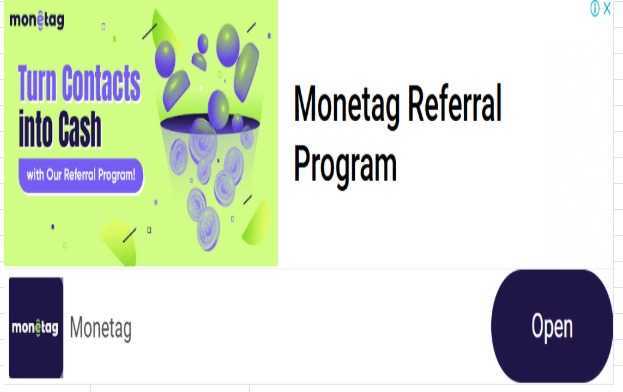PMBOK – Planning Project Performance Domain
Introduction
Planning is the cornerstone of successful project execution. While execution gets the work done, planning defines what “done” looks like, how it will be accomplished, and who is responsible for what. In the PMBOK® Guide – Seventh Edition, planning has evolved from being a phase-oriented activity to a continuous, adaptive, and value-driven process. It’s no longer just about creating a Gantt chart or a work breakdown structure—it’s about empowering teams, managing uncertainty, and ensuring alignment between stakeholder needs and project outcomes.
This blog provides a deep dive into the Planning Performance Domain, one of the eight performance domains outlined in the PMBOK® Guide (7th Edition). We’ll explore what it entails, why it matters, and how to apply its principles in real-world project environments.
What is the Planning Performance Domain?
The Planning Performance Domain focuses on the activities and functions associated with organizing and coordinating work across the project. According to the PMBOK® Guide, this domain supports the team’s ability to:
- Determine the right way to deliver value.
- Prepare for changes and uncertainties.
- Adapt continuously to evolving conditions.
- Ensure consistent alignment with stakeholder expectations.
This domain is about ensuring project outcomes are achievable, realistic, and aligned with the organization’s strategic goals.
Planning in the Context of PMBOK 7
Unlike earlier editions that viewed planning as a discrete phase, PMBOK 7 sees planning as an ongoing activity that evolves as new information becomes available. This change is rooted in the realities of today’s complex, adaptive environments where rigid plans quickly become outdated.
Key Characteristics:
- Iterative and Incremental: Planning evolves with the project.
- Collaborative: Involves all relevant stakeholders.
- Outcome-Focused: Oriented toward delivering value.
- Contextual: Tailored to the project’s complexity, size, and development approach.
Objectives of the Planning Performance Domain
The main objectives of the planning domain are to:
- Establish the Project Vision and Objectives
- Define Scope, Time, and Cost Baselines
- Determine the Development Approach and Life Cycle
- Identify Resources and Responsibilities
- Establish Governance Structures
- Anticipate Risks and Develop Responses
- Facilitate Stakeholder Engagement
- Enable Adaptability and Change Management
By achieving these objectives, project teams set a strong foundation for execution, monitoring, and successful delivery.
Key Elements of the Planning Performance Domain
1. Planning as a Continuous Activity
Planning does not end once execution begins. In adaptive and hybrid environments, planning is iterative, meaning plans are regularly revisited and adjusted based on feedback and changing conditions. Teams refine their direction and scope at multiple points.
Example: Agile projects revisit plans at the end of every sprint during sprint planning and retrospectives.
2. Scope Planning
Scope defines the boundaries of the project—what will and won’t be delivered. Planning the scope involves:
- Defining the product scope (features, functions, quality).
- Defining the project scope (work required to deliver the product).
- Creating a Work Breakdown Structure (WBS) in predictive environments.
Scope planning must consider progressive elaboration, where scope details emerge over time.
3. Schedule Planning
Time is a critical constraint in any project. Schedule planning involves:
- Identifying tasks and sequencing them.
- Estimating durations and setting deadlines.
- Using scheduling tools like Gantt charts or burndown charts.
- Determining critical paths and float.
In Agile environments, velocity and story points help estimate delivery timelines.
4. Cost Planning
Budget planning ensures the project has the necessary financial resources. This includes:
- Estimating costs of labor, materials, tools, and risk reserves.
- Determining funding needs and cash flows.
- Establishing cost baselines for tracking.
Cost planning is iterative in nature and closely linked with scope and schedule planning.
5. Resource Planning
Resources go beyond just team members—they include facilities, equipment, and technology. Planning in this area includes:
- Identifying required skill sets.
- Assigning responsibilities (RACI matrices).
- Managing team dynamics and availability.
- Planning for training and development needs.
Tools: Resource histograms, capacity planning charts.
6. Risk Management Planning
Every project has uncertainty. Risk planning helps the team proactively identify, assess, and prepare for it.
Key activities include:
- Creating a risk register.
- Performing qualitative and quantitative risk analysis.
- Developing risk response plans (avoid, transfer, mitigate, accept).
- Planning for emergent risks through resilience and agility.
7. Procurement and Contract Planning
If the project requires outside suppliers, procurement planning is essential. It involves:
- Deciding what to procure externally.
- Selecting contract types (fixed-price, T&M, cost-reimbursable).
- Creating procurement schedules and evaluation criteria.
8. Quality Planning
Quality doesn’t happen by accident—it’s planned. Quality planning includes:
- Defining quality standards and metrics.
- Determining how to measure and ensure quality.
- Planning inspections, reviews, and audits.
- Aligning quality with customer expectations.
9. Stakeholder Engagement Planning
Effective stakeholder engagement is critical to project success. Planning includes:
- Identifying stakeholders and their expectations.
- Assessing influence and interest levels.
- Developing engagement strategies.
- Establishing communication plans.
10. Integration Planning
Integration brings all plans into a unified whole. It ensures different elements of the plan work harmoniously. It includes:
- Change management processes.
- Configuration management.
- Creating a cohesive project management plan.
Planning Across Different Development Approaches
Predictive (Waterfall) Planning
- Comprehensive upfront planning.
- Baselines established early.
- Sequential execution.
Strengths:
- High visibility and control.
- Good for fixed-scope, regulated environments.
Weaknesses:
- Poor adaptability to change.
Adaptive (Agile) Planning
- Plans evolve with each iteration.
- Prioritization is key (e.g., backlog grooming).
- Collaborative planning with stakeholders.
Strengths:
- Highly responsive to change.
- Encourages innovation and feedback.
Weaknesses:
- Can appear chaotic without proper discipline.
Hybrid Planning
- Blends predictive and adaptive planning.
- Example: Predictive for compliance tasks, Agile for development.
Best Fit:
- Projects with mixed constraints.
- Organizations transitioning to Agile.
Tailoring the Planning Approach
PMBOK 7 emphasizes tailoring—adapting your planning processes to fit the context.
Tailoring Considerations:
- Project size and complexity
- Organizational maturity
- Development approach
- Stakeholder needs
- Regulatory constraints
- Team experience
Planning should be fit-for-purpose, not one-size-fits-all.
Tools and Techniques Used in Planning
Area | Tools & Techniques |
Scope | WBS, Product backlog |
Schedule | Critical Path Method, Gantt charts, Kanban boards |
Cost | Analogous and parametric estimation |
Risk | Risk register, Monte Carlo simulation |
Quality | Checklists, quality metrics |
Stakeholders | Power/Interest grid, communication matrix |
Resources | RACI matrix, skill gap analysis |
Planning and Value Delivery
The ultimate goal of planning is value delivery—meeting the needs of stakeholders and contributing to organizational strategy.
How Planning Supports Value Delivery:
- Clarifies what constitutes value.
- Establishes a path to deliver that value.
- Aligns team activities with business objectives.
- Monitors progress against value-driven outcomes.
Planning in the Value Delivery System
The PMBOK 7 introduces the Value Delivery System, which includes portfolios, programs, and projects working together to deliver value.
The Planning domain supports this system by:
- Translating strategic goals into actionable plans.
- Ensuring that each initiative is aligned with enterprise strategy.
- Making course corrections as needed.
Challenges in Planning
Challenge | Solution |
Uncertainty | Use rolling wave planning and iterative methods |
Lack of stakeholder input | Engage stakeholders early and often |
Inadequate resources | Plan resource availability and constraints realistically |
Changing priorities | Build flexibility into plans |
Poor estimation | Use historical data, expert judgment, and simulations |
Planning and Team Collaboration
Effective planning requires high team engagement. Collaborative planning:
- Builds ownership.
- Surfaces risks and assumptions early.
- Enhances creativity and innovation.
- Increases alignment and motivation.
Tools like daily stand-ups, planning poker, and workshops enhance collaboration in planning.
Metrics for Measuring Planning Effectiveness
How do you know your planning is working?
Key Metrics:
- Schedule variance (SV)
- Cost variance (CV)
- Plan accuracy (% of forecast vs actuals)
- Risk exposure index
- Stakeholder satisfaction scores
- Forecast reliability
- Value realization (ROI)
These indicators help refine and improve planning activities.
Example Case Study: E-commerce Website Launch
Context: Launch of a new e-commerce platform.
Planning Activities:
- Stakeholder interviews for scope definition.
- Sprint planning for iterative development.
- RACI matrix for role clarity.
- Risk register for vendor delays.
- Communication plan with weekly check-ins.
Outcome:
- On-time delivery within budget.
- High stakeholder engagement.
- Adaptable to new customer feedback mid-way.
Final Thoughts
Planning is no longer a one-time task completed at the beginning of a project. In the modern world of project management, planning is a strategic, adaptive, and continuous activity that evolves as the project unfolds. The Planning Performance Domain in the PMBOK® Guide (Seventh Edition) captures this dynamic reality.
By integrating thoughtful planning across all facets—scope, schedule, cost, quality, risk, and stakeholders—teams can chart a course that is both resilient and aligned with organizational value. Whether you’re delivering software, building infrastructure, or transforming a business process, your ability to plan effectively will directly influence your ability to deliver success.
Key Takeaways
- The Planning Performance Domain supports value delivery through thoughtful, continuous coordination of work.
- It spans scope, schedule, cost, resources, risks, quality, procurement, and stakeholder management.
- Planning should be tailored to the project’s context and complexity.
- In Agile, planning is iterative and collaborative.
- Good planning aligns stakeholder expectations, anticipates challenges, and supports adaptability.


